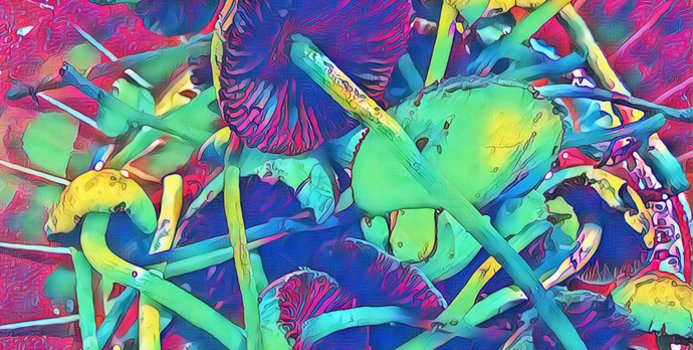From a very recent news report:
“The man charged with fatally shooting an engaged Seattle couple, severely injuring his girlfriend and wounding two others at a Washington state musical festival told police he was hallucinating on mushrooms at the time…”
Seems he is an active-duty soldier who unexpectedly became paranoid at the event– convinced he was surrounded by enemies.
I hope we don’t see more stories like this one in future, but somehow, I suspect we will. All this has happened before, after all.
Two young Harvard psychology professors, Tim Leary and Richard Alpert, led America’s first major go-round with psilocybin. The goal of their research: to use hallucinogenic substances with incarcerated prisoners, in hopes of reducing recidivism.
They were impressed by the results until, per Wikipedia, “The legitimacy of their research was questioned because Leary and Alpert took psychedelics with the students during the experiments, an accusation to which Leary replied that the researchers had to be in the same state of mind as the subject to understand his experience in the moment it happens. In 1961, two Harvard students ended up in the mental hospital after consuming psilocybin…”
Not long afterwards, Harvard lost much of its enthusiasm for the program.
I first encountered the safety issues around hallucinogens as a student co-op at a Boston psychiatric hospital in the late 1960’s. A 21-year-old student, a ROTC participant, was admitted during the night in the grip of acute psychosis. Initially it was assumed to be an episode of schizophrenia – he was at a vulnerable age – but after a few days in the hospital, the patient had cleared somewhat, and the psychiatric resident was able to get a better history. That’s where the issue of drugs emerged. I watched as the resident questioned the patient about his drug use. In this case, it had been at an outdoor music festival.
“It was mushrooms,” the patient recalled. “I took some and I started to feel funny.”
“Did it look like a mushroom?” asked the psychiatrist. It did. “And I remember asking the guy for magic mushrooms. And that’s what he gave me.”
The psychiatrist was unconvinced. “Did you know him?”
The patient shrugged. “No. He was just some guy.”
This is how many (if not most) people first come into contact with hallucinogenic drugs — not in a controlled setting of the sort where research is conducted. In clubs and places like that festival.
The patient improved and was discharged a couple of weeks afterwards. But the day before my term at the hospital ended, he was readmitted through a local emergency room, this time following a serious suicide attempt. Apparently, he’d been plagued by recurrent nightmares of violence and death, and crippling anxiety when awake. The medications were no help. “Something’s broke in there,” he said plaintively, pointing at his head.
I think he was right.
The human brain remains the most complex entity we’ve yet encountered in the universe. Even now, all these years later, we’re only beginning to unravel the biggest mystery of all – our own brains.
Including why, on some unforeseen occasions, things can go horribly wrong.













